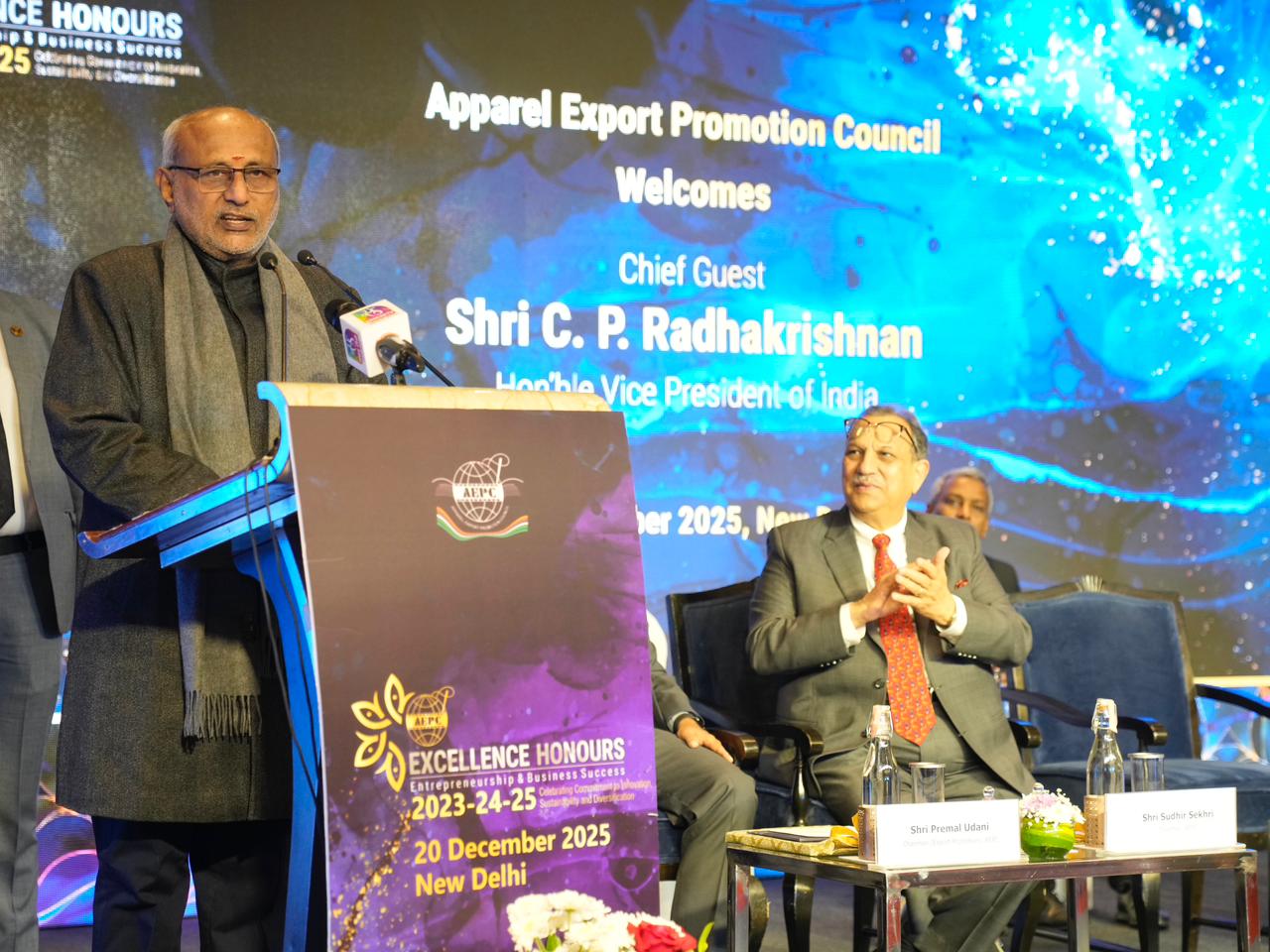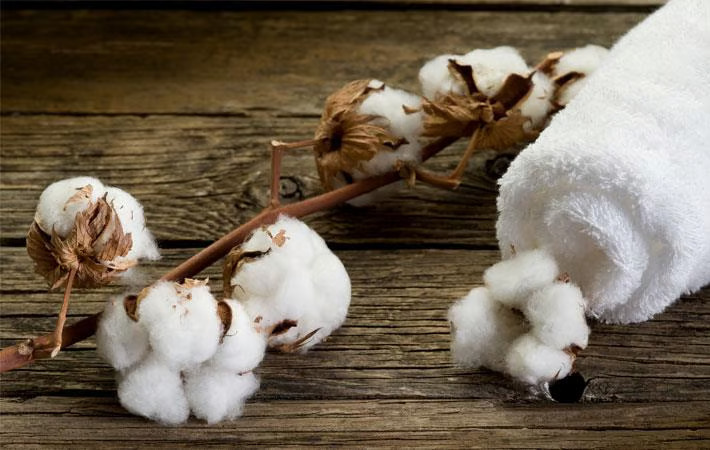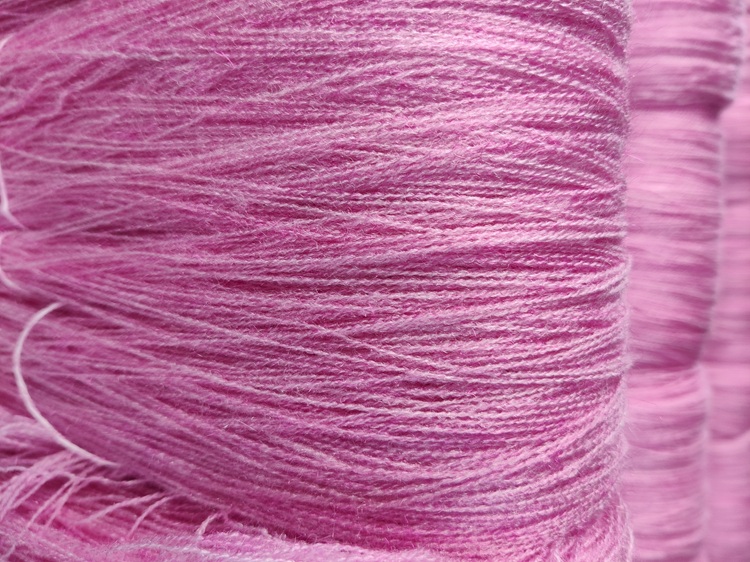FW
Yiwu Tex 2016 held in China from June 14 to 16 features around 160 textile machinery exhibitors from 10 countries and regions to showcase the latest intelligent and sustainable textile manufacturing technology. It is expected to attract 12,000 visitors, over 20 trade associations and over 40 important textile-related corporates.
A full spectrum of smart and automated machineries, innovative fabric technologies and cost-effective business solutions tailored for the knitting, hosiery, sewing, garment and digital printing industries are showcased. Experts share their insights on business upgrade or transformation with the use of smart technologies, new fabrics, information communication technology and data management systems.
To accommodate diversified sourcing needs from buyers, the exhibition features three thematic zones including knitting and hosiery machinery, sewing and automatic garment machinery and dyeing, finishing and digital printing machinery.
Yiwu Tex is supported by leading knitting, hosiery and garment enterprises. Seminars focus on the topics of fiber and fabric innovation, planning and scheduling optimization systems for apparel production, intelligent traffic light management systems, digital textile printing, functional underwear, the social media, new sales channels and advanced planning and scheduling systems for the textile supply chain. The knitwear display zone showcases the latest fabric innovation, production techniques and pattern designs.
A textile mall called Tex Valley which has been set up under the Comprehensive Powerloom Cluster Development Scheme of the Union Ministry of Textiles had 225 showrooms inaugurated on June 9. Leading textile brands such as Pothys, Nandu Brand Lungies, Chextex, Cotton Blossom, ADT Saral volume zero, Pommy Garments, Twin Birds, Tantex and Kibs Lungies.
Based in Erode, the textile cluster is a strong powerloom cluster with aggressive manufacturing base and weak marketing linkages. Tex Valley has 12 different product zones with over 100 manufacturers and wholesale shops in each zone with proper index systems which can be identified easily by buyers. This helps to reduce the cost and time of the buyers and increase the confidence to encourage them to visit the Tex Valley campus.
The Powerloom Development and Export Promotion Council (PDEXCIL) had entered into an agreement with Tex Valley to establish its Regional Centre in Tex Valley campus. Tamil Nadu Textile Corporation has identified Tex Valley as its logistics and transit hub and sourced 10,000 sq ft of land in Tex Valley weekly market complex. The operations started in March.
As spinners report a steady stream of orders, demand for specialty yarns continue to be brisk mid-year. However, the commodities business continues mired in the unexpected slump that began earlier this year. And even for those that have noticed no appreciable decline in volume, orders are smaller than usual and the pipeline is shorter than they would prefer.
One broker who focuses on specialty yarns said that for them, business is stronger than what commodity yarn sellers are experiencing. In fact, business this year is ahead of where it was this time last year. But we can’t move the commodity yarns that I have acquired.
For the most part, with the exception of specialty yarns, spinners are disappointed with where they are at this point in the year. The spinners do not expect to experience an extended slowdown in orders. All indications were that the volume of business experienced over the past couple of years would continue. However, no one is panicking. While business is down, it is certainly not dreadful, and the spinners are optimistic that it will not get to that point.
Pakistan’s garment exports have fallen 12.4 per cent in the 11 month period (July-May) from a year ago. Cutthroat competition with countries like Vietnam, Bangladesh and China, is giving a tough time to exporters. While the minimum wage is around $68 in Bangladesh, in Pakistan it is $125 and still rising. While Pakistan gives exporters a four per cent rebate on an incremental basis, countries like Bangladesh go all the way.
Pakistan has witnessed 12 per cent decline in cotton cultivation this year as compared to last year. Pakistan is importing extra long staple cotton from the United States and some other countries. India gives subsidies on export of all surplus commodities which is not available to farming community in Pakistan. Due to massive subsidies on export of surplus commodities cotton in India, is cheaper in India than Pakistan.
To boost exports, Pakistan is contemplating a zero rated sales tax policy for five of its export sectors i.e. value-added textiles, carpets, surgical, sports goods and leather. Out of 4,00,000 cotton bales available in the country, 64,000 are with the Trading Cooperation of Pakistan and the rest with growers and other agencies.
Interfilière Lyon will be held in France from July 9 to 11, 2016. This is a trade fair for lingerie and swimwear materials and accessories. Around 280 exhibitors, including 40 new exhibiting companies are expected at the show.
The trade show will bring together active wear leaders and organise forums and conferences with in-depth reports on advances in the industry. The exhibition will be divided into seven sectors which include: lace, embroidery, fabrics (knits, woven, print and textile finishing), accessories (hooks, elastic tapes, buttons, and more), textile designers and trends agencies, fibers, and sourcing.
The ‘Momenti di Passione’ section event will focus on preview of summer 2018 trends. This dedicated swimwear, sportswear and active wear space is designed to highlight new products and provide a forward-looking overview of these markets. There will be a presentation of the base layer concept. The base layer concept is a driver for the active wear lingerie market. Base layer apparel with its important thermal qualities first appeared in the ski sector and is now a key part of active wear wardrobes.
The future of the well-being and fitness market will be discussed. Which functions should material manufacturers prioritize? Which developments should fiber specialists research?
Sales growth picked up at Swedish budget fashion firm Hennes & Mauritz in May after unusually cold spring weather in Europe had capped growth in previous months. Sales in local currencies rose nine per cent last month from a year earlier. The company is expected to have marked down prices of unsold transitional products partly within the quarter. This is likely to impact gross margins for the second quarter. The May reading indicates monthly like-for-like sales growth of one per cent.
Monthly fast-fashion sales trends are often volatile and influenced by the weather and H&M cited an unusually cold spring in some markets after sluggish sales growth in March and April. H&M’s net sales in March through May, its fiscal second quarter, rose to 46.9 billion crowns from 45.9 billion. There was a one per cent decline in overall clothing sales in Germany, H&M's largest market, in May. Lackluster sales at some clothing retailers also indicate slowing underlying demand in some markets.
H&M is the second-biggest clothing retailer after Inditex, which owns Zara. Inditex beat forecasts with a six per cent rise in quarterly profit, driven by strong sales as fast turnover allowed Zara and other brands to react quickly to unseasonable weather.
The long-anticipated sales of cotton from China’s State Reserve began on May 3rd and during the first month of sales, demand has been strong with over 97 per cent of the cotton being offered finding buyers. As of mid June, more than 3.2 million bales (697,000 MT) had been sold.
Initially, foreign cotton -- US and Australian, represented majority of cotton being offered, but the amount of foreign cotton has steadily been reduced and in the first week of June no foreign cotton was offered. Total sales of foreign cotton have reached 300,000 MT, the reported limit for sales this auction cycle.
Meanwhile, sales are made through a daily auction where a minimum price is set for each lot offered for sale. A floor price is set each week based on the average of the previous week’s internal market price and the A-Index.
The minimum price of each lot is the floor price adjusted based on quality. All of the cotton being sold has been regraded and weighed. China announced that sales from the State Reserve would continue until the end of August, and that up to 2 million MT (9.2 million bales) could be sold. If sales were to continue at the same pace as observed so far, the entire 2 million MT could be sold by the time auctions end in August. However, even these large sales would represent less than one fifth of the total amount believed to be held in the State Reserve (11 to 11.5 million MT).
Some 21 readymade garment factories in Bangladesh have implemented the internationally recognised occupational health and safety (OHS) standards for industrial workers and workplace safety. The benefits of ensuring health and safety of garment workers have been translated to increasing worker retention and productivity as well as the mitigation of massive cost burdens that workplace accidents and hazards entail.
These days, Bangladesh’s industrial sector has addressed the specific issues of fire, building and electric safety. Until now, OHS measures implemented in the industry were sporadic and disorganised in their approaches. A holistic approach is now being adopted to address OHS through operationalising of a management standard. There are potential benefits to adopting OHS measures to factories and the industry at large. These include greater acceptability in the compliance-sensitive western markets, which took on added importance following the tragic incidents of Rana Plaza and Tazreen.
The garment sector in Bangladesh had no choice but to adhere to norms. The export contract stipulated such binding agreements. Failure to comply meant that orders were cancelled and shifted elsewhere. It was not only the quality of the product that mattered the working environment in which garments were produced was also given equal attention.
Euratex, on its 20th anniversary - hosted an international conference 'Best in Partnerships' devoted to inter-sectoral partnerships to boost European manufacturing. The European Apparel and Textile Confederation (Euratex), is the voice of the textile and clothing industry in Europe.
In her key note address, said Elzbieta Bienkowska, European Commissioner for Internal Market, Industry, Entrepreneurship and SMEs, said that textile and fashion industry is a strategic sector in the EU and is performing well. The European Commission is undertaking a number of actions to meet three main challenges of the sector: innovation, international competition and skills shortage.
She underlined that European institutions are expecting full engagement of industry, because knowledge about companies' needs should drive the development of new policies and programmes.
Meanwhile, Euratex's President Serge Piolat said with textile and fashion sector appreciating the European Commission's is more willing to build a dialogue with the industry. Euratex proposed concrete action plan to the European Commission to strengthen internationalisation of SMEs, assure fair conditions for the European companies through stricter market surveillance, provide better access for SMEs to EU research funds and boost innovation investments at regional level through RegioTex initiative.
UK’s possible exit from the European Union may put a negative impact on the Bangladeshi exports to the UK, which is the third largest export destination for Bangladesh products, fear economists and exporters. With Britain set to vote on June 23 in a referendum to decide whether they should leave or remain in the European Union, latest opinion polls are suggesting a possible exit of UK from the EU.
According to economists, if the UK exits (commonly known as Brexit) the EU, Bangladesh would have to go for bilateral negotiation to avail trade facilities. ‘If the Brexit brings positive things for the economy of the UK it would not hit Bangladeshi exports, but if the exit leads to any adverse impact on the economy of UK and EU then we will be a sufferer, opined Centre for Policy Dialogue executive director Mustafizur Rahman. Bangladesh’s exports to UK was worth $3.20 billion in the financial year 2015-16 with $2.90 billion coming from readymade garments sector alone. Faruque Hassan, Senior VP, Bangladesh Garment Manufacturers and Exporters Association, believes Bangladeshi export business would be hampered as the possible Brexit would damage the economy of the EU. He hoped if the UK leaves EU the duty benefits for Bangladesh would remain same.
Bangladesh enjoys duty-free benefits for all products and flexible rules of origins for readymade garments in the EU. Due to Brexit, Bangladesh would have to need bilateral agreements to avail the benefits in the UK.












